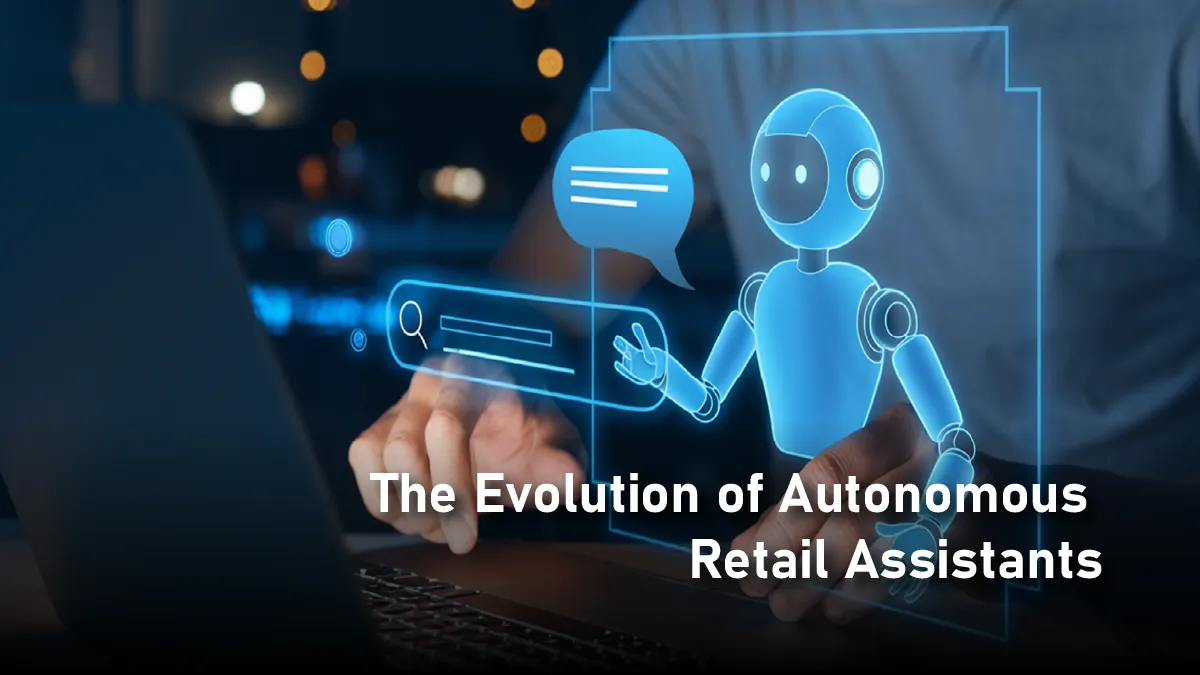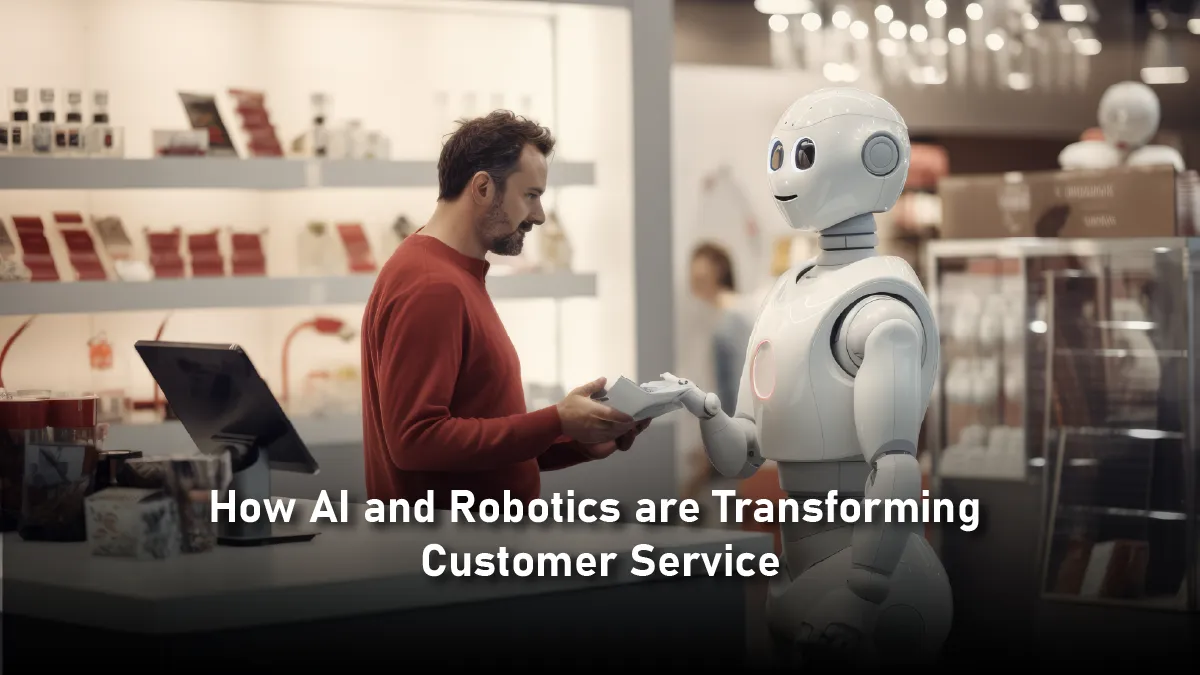Technology is moving fast. Retail is using AI and robots to transform how we shop. AI robots, once just a vision, now welcome shoppers in stores. They help find items and give tailored suggestions based on what you like to buy. This reality is transforming retail spaces. Autonomous retail assistants revolutionize shopping by making it fast, easy, and efficient. They free human workers to deliver exceptional, personalized customer service.
The Evolution of Autonomous Retail Assistants

Retail has changed over time to serve its customers better. It started with self-checkout kiosks and now includes AI-powered smart stores. At first, retail automation focused on efficiency. It aimed to cut wait times, lower errors, and enhance inventory management. But today’s autonomous retail assistants are capable of much more. AI assistants now interact with customers effectively. This is due to machine learning, natural language processing (NLP), and computer vision. They understand needs and can even predict what customers want before they ask.
Retail giants like Amazon, Walmart, and Alibaba lead this tech change. Amazon’s cashier-less stores let customers grab what they want and go. Sensors and AI manage the checkout quietly in the background. Walmart has sent out inventory-scanning robots. These robots move through the aisles. They stock products strategically and position them optimally. These innovations drive efficiency and elevate customer experience. They eliminate long lines and stock shortages, ensuring seamless shopping.
How AI and Robotics are Transforming Customer Service

A More Personalized Shopping Experience
Picture this: you walk into your favorite clothing store. Instead of wandering around, a smart assistant spots you. It recommends outfits based on your past purchases, current trends, and the weather. AI assistants look at customer data. They give personalized recommendations. This makes shopping easy and fun. It’s like having a personal stylist or shopping assistant at your fingertips, 24/7.
Faster, Frictionless Checkouts
No one enjoys waiting in line. Autonomous checkout solutions are ending this hassle. AI-powered self-checkout systems and cashier-less stores use cameras, sensors, and smart algorithms. They track what customers grab from the shelves. After shopping, they walk out, and the system processes the payment automatically. This cuts wait times and makes shopping more enjoyable by creating a smooth, hassle-free experience.
According to Statista, in 2018, about 350 stores worldwide had a fully autonomous checkout process. The number of stores with autonomous checkouts is expected to rise. By 2024, there could be around 10,000 stores offering this service.
24/7 Customer Support
AI chatbots and in-store robots can help customers 24/7. Unlike human workers, they don’t need breaks or shifts. Digital assistants are always ready to help. They answer questions. They help customers find products. Retailers such as Sephora and H&M use AI chatbots in their apps. These chatbots share promotional details with customers. These chatbots offer tailored shopping tips. This makes it simple for customers to shop from home.
Smarter Inventory Management
Autonomous retail assistants are vital for managing inventory behind the scenes. Traditional stock management depends a lot on manual labor. This process takes time and can lead to mistakes. AI robots can scan shelves in real-time. They find misplaced items, track stock levels, and predict when products will run out. Bossa Nova Robotics and Simbe Robotics have created smart inventory systems. These systems cut waste and help customers find what they need.
Guiding Customers with Ease
Big department stores and supermarkets can confuse customers. They often struggle to locate the right aisle or product. AI-powered in-store navigation assistants pinpoint exactly what shoppers need, fast. Lowe’s NAVii robot quickly helps customers find products. This allows human staff to offer personal assistance where it matters most.
Also Read: From Manual to Autonomous: How AI is Powering the Next Generation of Freight Management
Addressing Challenges and Ethical Considerations
The Question of Job Displacement
A major worry about AI and automation in retail is job loss. As robots handle repetitive tasks, many worry that humans may lose their jobs. However, rather than replacing jobs, AI is redefining them. Retail employees can skip scanning shelves and processing payments. This way, they can focus on improving the customer experience. They can interact personally, offer styling tips, or assist with complicated purchases. Many companies are investing in upskilling their workers. They want to prepare employees for jobs needing creativity, problem-solving, and emotional intelligence. These are skills that robots can’t replicate.
Privacy and Data Security
AI assistants need customer data to provide personalized experiences. This raises worries about privacy and data security. GDPR and CCPA regulations make this a critical issue. Retailers must clearly show how they collect and use data. They should also have strong security measures to protect consumer information. Building and maintaining customer trust is crucial for the lasting success of AI retail solutions.
Technical Limitations and Maintenance
Despite their many advantages, autonomous retail assistants are not perfect. AI systems require continuous updates, and robots need regular maintenance to function efficiently. Retailers need to invest in ongoing improvements. This helps prevent service disruptions. AI excels at structured tasks, but it falters when it comes to human nuances. Human intervention is essential in certain customer interactions.
The Future of Autonomous Retail Assistants
The future of retail will be a blend of AI, robotics, and human expertise. AR and voice recognition will make shopping more interactive. Picture a virtual shopping helper. It suggests outfits and shows how they’d look on you using an AR mirror. Voice-activated AI assistants guide customers through in-store ordering. Robots that are easy to use will soon take on tasks like bagging groceries. They will also manage delicate items carefully.
AI and robotics boost efficiency and automation. But, human workers add warmth, creativity, and emotional intelligence. These unique qualities set people apart from machines. Success hinges on striking a balance between the two. Retailers that blend technology with real customer interactions will stand out in the market.
Conclusion
Autonomous retail assistants are now a reality. They are changing shopping experiences worldwide. AI and robotics are transforming retail. They create frictionless checkouts, offer personalized recommendations, and improve inventory management. This makes shopping more efficient, convenient, and focused on customers. Businesses that take a thoughtful approach to this transformation will face challenges. However, they will be better prepared to succeed in the future. Ultimately, retail isn’t just about technology; it’s about people. The best retailers will use AI to enhance the human connection. This connection makes shopping a truly enjoyable experience, not replace it.




